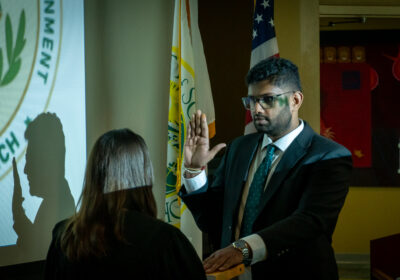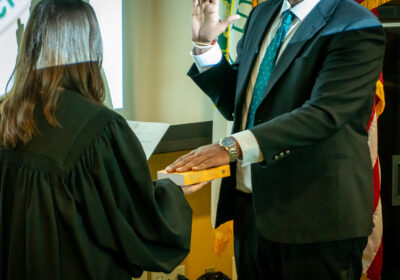New student fees on BOG agenda
This semester could see the creation of new student fees for fall 2011.
The Green Energy Fee (GEF) and the Global Experience Fee will be voted on during the Florida Board of Governors (BOG) meeting next Wednesday and Thursday at the University of West Florida. If the fees are passed at the meeting, students will have the opportunity to vote for them in this semester’s Student Government (SG) election before they are adopted at USF.
Over the winter break, the GEF came one step closer to becoming a reality at a Dec. 16 USF Board of Trustees (BOT) meeting. The $1 per credit hour fee, which was created to direct money towards energy conservation projects, was passed unanimously.
The fee was proposed during a meeting with Karissa Gerhke, a senior majoring in biology and president of the USF Student Environmental Association, and other students in environmentally conscious university organizations across the state in 2007.
The fee could be used to install sunscreens on windows facing the south and windows in buildings that absorb more solar energy as well as solar roofs on buildings that absorb heat and have a high level of reflectivity, she said.
“USF, budgetary-wise, doesn’t have the money to do these simple projects,” Gerhke said. “So a small amount can save the school millions of dollars on energy costs.”
Gherke said that if the BOG passes the GEF, USF could be one of the first schools in the state to implement it, depending on the student vote. USF students were given two referendums through SG, one in spring 2009 and the other in fall 2010, to gauge interest in the fee. The spring 2009 referendum passed with a 58 percent approval vote and the 2010 referendum passed with 69 percent.
If both the BOG and the student body pass the fee, students would have to vote it into effect every three years.
The Global Experience Fee, a $10 per semester fee to raise money for international education opportunities, is also awaiting approval from the BOG.
The fee was approved by the Executive Management Council and is per capita, which means that each individual university within the USF system could decide to implement it if it passes, said Roger Brindley, associate vice president for global academic programs.
Brindley said that during the 2009-10 school year, only 1.4 percent of the student population had study abroad experience. A major goal behind the fee is to provide scholarships to students to increase the study abroad statistic, he said.
“Both at Florida State University and at the University of Florida, over 4 percent of their students have an international experience,” he said. “At USF, we’re under 2 percent. Some of the larger Midwest universities are up around 8-10 percent and above. I think that’s a worthy goal for us but that really is a long-term goal. In the near future we would like to move towards 5 percent.”
Ultimately, committees established on each campus consisting of students and faculty will determine how the money will be spent, but Brindley said he doesn’t think all the money should be spent on study abroad scholarships.
“If we’re going to ask individual students to share $10 a semester, then we also have to ask individual students to structure a framework to see value here on campus,” he said.
Supporting the development of global programs on campus, international students at USF and funding global lecture series may be additional uses for the fee, he said.
In December, USF students took a straw poll to gauge support for the fee. Despite only 42 percent voting in favor of the fee, Brindley said he is still optimistic about its future.
“Given that we’re only just now beginning to enter into discussions with the Student Government and the board of student committees, I was actually heartened that over four out of 10 thought it was a good idea,” he said.






